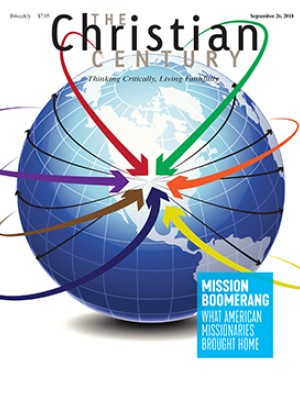How canon law hinders ending abuse by priests
The 1983 revision put forward by Pope John Paul II to the entire code made it impossible for bishops to dismiss priests.
In Pope Francis’s letter responding to a Pennsylvania grand jury report, he wrote, “We showed no care for the little ones; we abandoned them.” An important but often poorly understood reason for this is the church’s Code of Canon Law, which the pope alone can change.
Canon law, which governs the church and lays out its theology, has a complex history. It originated in early Christian communities, came to be called canon by the fourth-century councils, and was consolidated by the Roman Catholic Church in 1917.
Read our latest issue or browse back issues.
The code was revised in 1983 to take into account changes stemming from the Second Vatican Council in 1962–1965, which was held to settle doctrinal issues. The new code gave the Vatican extensive control over the fate of accused clergy.
There was more. It was a sin, and a violation of canon law, to do anything that would cause scandal to the faithful by leading them to sin or question their faith. If a bishop, for example, were to make known that a priest had sexually abused children in his diocese, the bishop, and not just the priest, would be guilty under canon law of causing scandal.
Also included was a requirement that bishops provide priests with funds when they were removed from ministry but not dismissed from the clerical state.
Under the 1917 code, bishops, under certain conditions, could dismiss priests from the clerical state, and do so without a canonical trial, but only after it was determined that there was no possibility of reform.
The 1983 revision to the code put forward by Pope John Paul II made it impossible for bishops to dismiss priests. Authority for doing so became centralized in the Vatican. It also reduced the maximum time within which proceedings could be initiated against priests having sex with a child to five years.
Bishops had to retain the abusive priests unless the latter were found guilty at a canonical trial and the Vatican—officially, the pope—agreed to dismiss them. At most, bishops could suspend, for a short time, a priest’s authorization to say mass and administer other sacraments or present himself publicly as a priest. But they could not do so permanently, and the Vatican sometimes overrules bishops who want to dismiss priests.
Although it is entirely within his power to do so, Pope Francis has not altered the Code of Canon Law with regard to clergy child sexual abuse. For the church truly to hold priests and their bishops accountable for child sexual abuse, this is an important step. —Religion News Service
This article was originally published at The Conversation.





